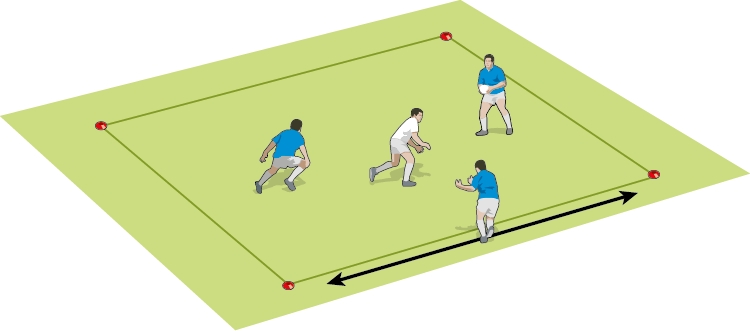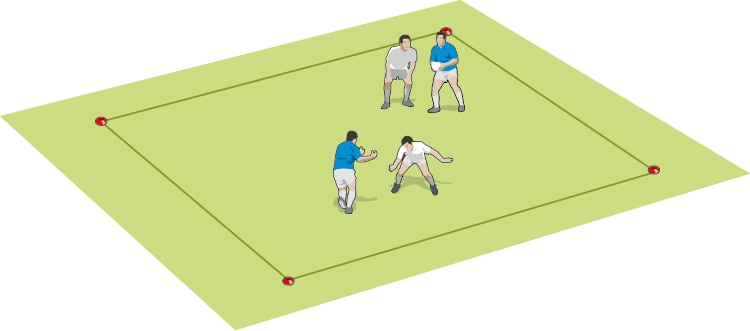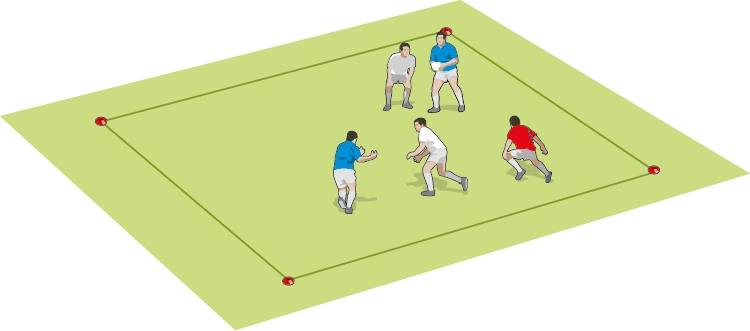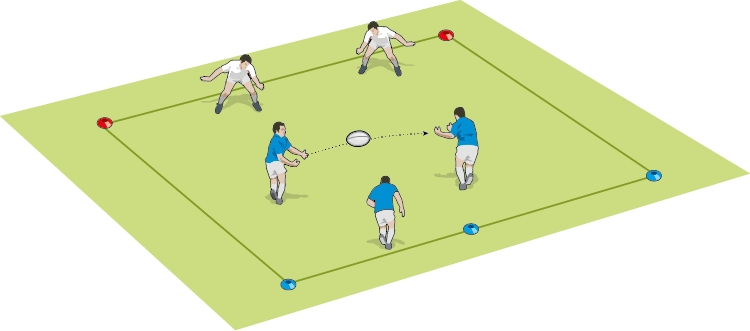You are viewing
1 of your 2 free articles
Warm-up Rondos
Originating in football, the Rondo is a small sided game that encourages many touches of the ball and can be easily constrained to impact the desired outcomes. Use them as a starter activity, getting players to self-organise into these simple games to work on their catch/pass skills under pressure.
STANDARD RULES

- Player can move with ball, become defender if they either: get intercepted, throw the ball out, or get touched in possession.
- Scoring variation – per pass or by scoring a try on any of the lines.
VARIATION #1: LINEMAN

- Standard rules, however now one attacker can only move along the lines to be an option to pass to.
- Scoring variation – per pass or by scoring a try on any of the lines.
VARIATION #2: 2V2

- Standard rules but 2v2 – on a change in possession, the other team begin to “attack”.
- Scoring variation – per pass or by scoring a try on any of the lines.
VARIATION #3: MAGIC MAN

- Standard rules plus magic man who is always an option for the attacking team.
- Scoring variation – per pass or by scoring a try on any of the lines.
VARIATION #4: MAGIC LINEMAN

- Standard rules plus magic man who is always an option for the attacking team - however he is restricted to the lines to move on.
- Scoring variation – per pass or by scoring a try on any of the lines.
VARIATION #5: 3V2

- Attack get 1 minute to score as many tries between the red cones as possible. Every time they’re touched or ball gets intercepted they pass the ball back to teammate behind the blue line to start again.
- Defenders can only move forward once ball crosses the blue line.
Other rule adaptation: if defender intercepts and gets outside the box before being tackled, they are immune from returning to the middle for 3 attempts.
Newsletter Sign Up
Coaches Testimonials

Gerald Kearney, Downtown Las Vegas Soccer Club

Paul Butler, Florida, USA

Rick Shields, Springboro, USA

Tony Green, Pierrefonds Titans, Quebec, Canada
Subscribe Today
Be a more effective, more successful rugby coach
In a recent survey 89% of subscribers said Rugby Coach Weekly makes them more confident, 91% said Rugby Coach Weekly makes them a more effective coach and 93% said Rugby Coach Weekly makes them more inspired.
Get Weekly Inspiration
All the latest techniques and approaches
Rugby Coach Weekly offers proven and easy to use rugby drills, coaching sessions, practice plans, small-sided games, warm-ups, training tips and advice.
We've been at the cutting edge of rugby coaching since we launched in 2005, creating resources for the grassroots youth coach, following best practice from around the world and insights from the professional game.













